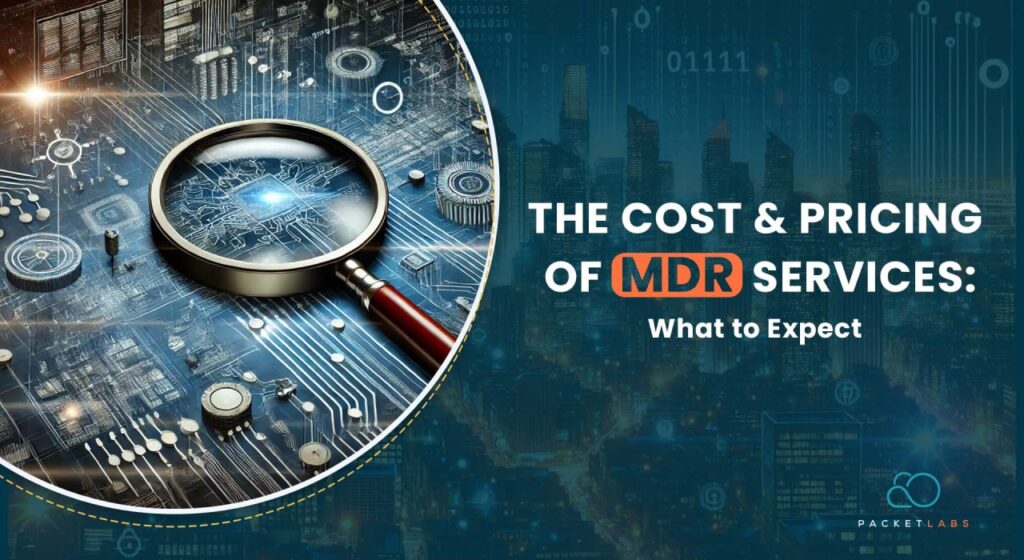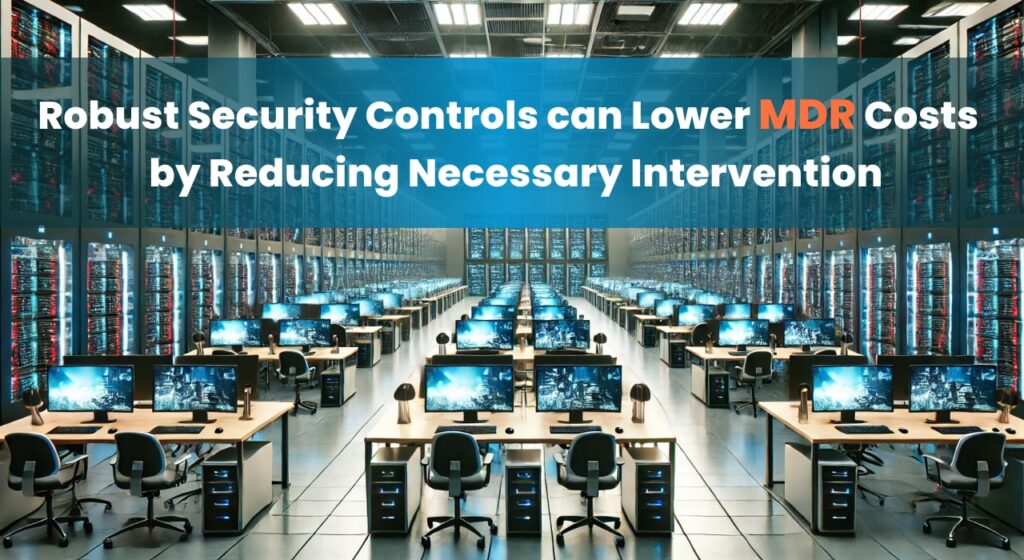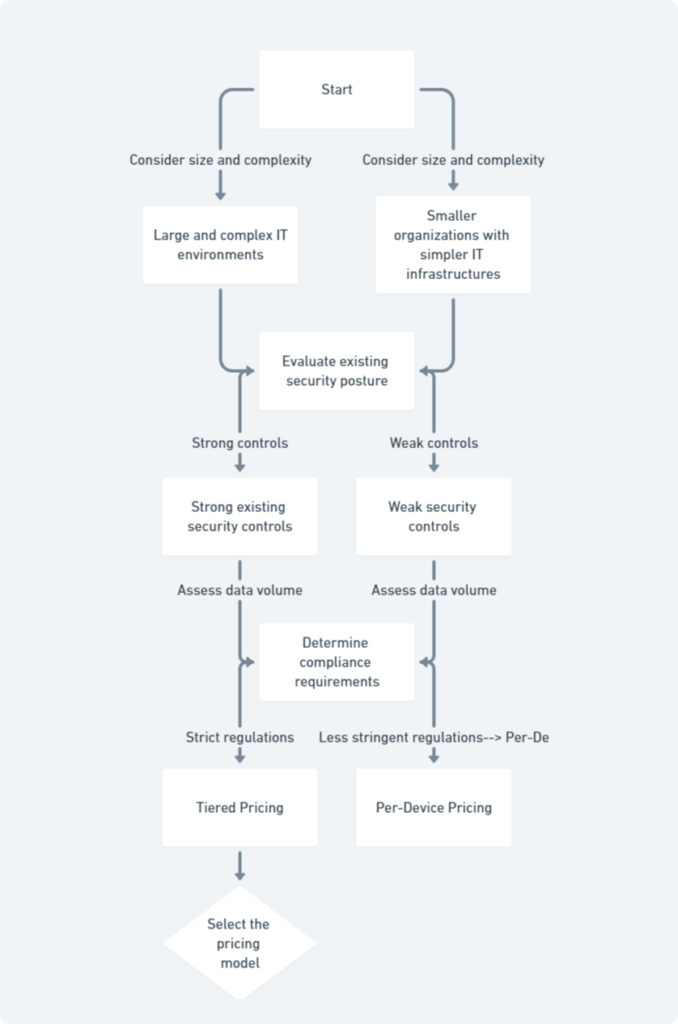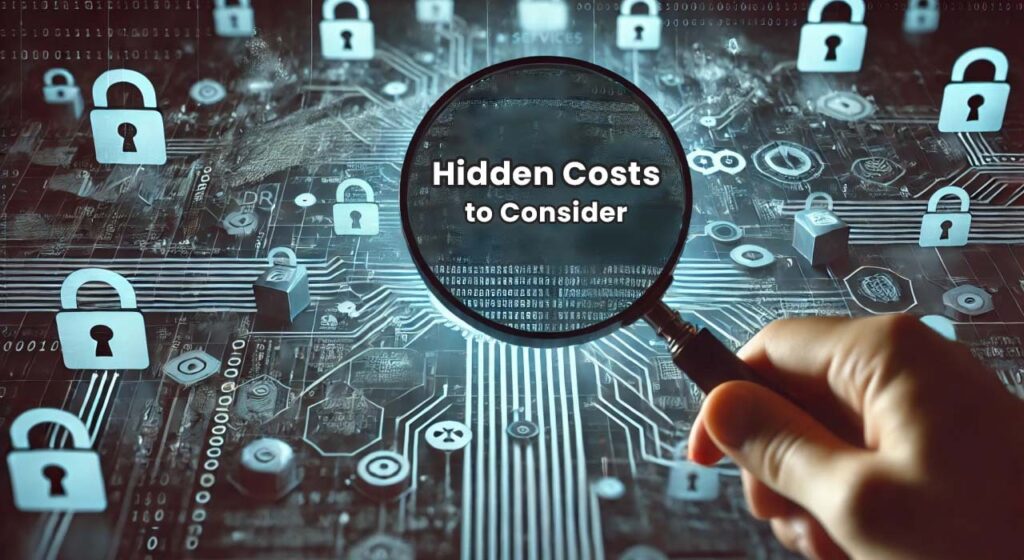
The ever-evolving cyber threat landscape presents a significant challenge for Australian businesses. Malicious actors are constantly developing new tactics, exploiting vulnerabilities, and launching sophisticated cyberattacks. In this environment, maintaining a robust cybersecurity posture has become more critical than ever. Managed Detection and Response (MDR) services offer a powerful solution, acting as a vigilant defender against these evolving threats.
MDR services leverage a combination of advanced security technologies and human expertise to continuously monitor an organization’s IT infrastructure for suspicious activity. These services can detect potential threats in real-time, investigate their nature, and initiate a swift response to mitigate damage. For instance, in 2022, the Australian Cyber Security Centre (ACSC) reported a 7% increase in cybercrime incidents compared to the previous year, with ransomware attacks alone costing Australian businesses an estimated $339 million. MDR services can play a vital role in preventing such attacks or minimizing their impact by proactively identifying and neutralizing threats before they can disrupt operations or compromise sensitive data.
However, implementing MDR solutions comes with a range of associated costs. Understanding these costs and the various pricing models offered by MDR providers is crucial for Australian businesses seeking to optimize their cybersecurity investments. This article will delve into the factors that influence MDR service costs, explore the different pricing models available, and provide valuable tips for negotiating the best value for your organization.
Factors Influencing MDR Service Costs

The cost of MDR services in Australia is not a one-size-fits-all proposition. Several key factors influence the overall price tag, and understanding these factors empowers Australian businesses to make informed decisions when selecting an MDR provider.
One significant factor is the size and complexity of an organization’s IT environment. Large corporations with sprawling networks, diverse device types, and a multitude of applications naturally require more comprehensive MDR solutions. These solutions involve a greater volume of data analysis, more intricate threat detection strategies, and potentially a larger team of security analysts to monitor and manage the system. Conversely, smaller businesses with simpler IT infrastructures may find success with basic MDR packages that focus on core security monitoring and alerting. As a reference point, Macquarie University Cloud Services highlights the correlation between business size and MDR cost, emphasizing the need for a tailored approach based on organizational complexity.
A business’ existing security posture also plays a role in determining MDR costs. Organizations that have already invested in robust security controls, such as firewalls, intrusion detection systems, and endpoint protection platforms, may require less intensive MDR intervention. These existing controls can act as a first line of defense, potentially reducing the number of security events that require MDR service intervention and ultimately lowering the overall cost.
The scope of MDR services offered by a provider is another crucial consideration. Basic MDR packages typically focus on real-time monitoring for suspicious activity and generating security alerts. However, more comprehensive solutions might include advanced threat hunting capabilities, proactive vulnerability management, and dedicated incident response services. These additional features come at a premium as they require a higher level of expertise and resource allocation from the MDR provider.
The volume of data an organization generates also contributes to MDR pricing. MDR services rely on continuous data analysis to identify potential threats. Businesses with significant data volumes, such as those in finance or healthcare, may incur higher costs as the MDR solution needs to process and analyze larger datasets to maintain optimal security coverage.
Finally, industries subject to strict compliance regulations, like healthcare and finance, often require additional MDR services to ensure they meet specific regulatory requirements. These additional services, such as detailed audit logging and compliance reporting, can increase the overall cost of the MDR solution.
| Factor | Cost Impact |
|---|---|
| Business Size & Complexity | Larger and more complex environments require more comprehensive MDR solutions, leading to higher costs. |
| Security Posture | Existing security controls can reduce the need for MDR intervention, potentially lowering costs. |
| Scope of MDR Services | Basic monitoring is cheaper than comprehensive solutions with threat hunting and incident response. |
| Data Volume | Larger data volumes require more processing power, potentially increasing MDR costs. |
| Compliance Requirements | Additional MDR services to meet stringent regulations can elevate costs. |
Common MDR Pricing Models
Selecting the most suitable MDR pricing model is crucial for Australian businesses seeking to optimize their cybersecurity investment. MDR providers in Australia typically offer several pricing structures, each with its own advantages and limitations. Understanding these models empowers businesses to make informed decisions based on their specific needs and budget.
One common model is tiered pricing. Providers offer pre-defined service packages with varying levels of features and functionalities. These packages typically range from basic monitoring and alerting to comprehensive solutions that include threat hunting, vulnerability management, and dedicated incident response. Tiered pricing offers the advantage of simplicity and predictability. Businesses can easily compare costs and features between packages to find one that aligns with their security posture and budget constraints. However, a potential drawback is the lack of customization. Organizations with unique requirements may find themselves confined by the limitations of pre-defined packages.
Another prevalent model is per-device pricing. Here, the cost is directly tied to the number of devices an MDR solution needs to protect. This model can be cost-effective for smaller organizations with a limited number of devices. However, it can become expensive for larger businesses with extensive IT infrastructures. Additionally, per-device pricing may not adequately account for the complexity of an organization’s network or the volume of data generated.
Per-user pricing bases the cost on the number of users within an organization. This model can be attractive for businesses with a high user-to-device ratio. However, it might not accurately reflect the true security needs of the organization. For instance, an organization with a large number of low-risk users may end up overpaying for MDR services.
Finally, custom pricing provides the most flexibility. MDR providers tailor solutions and pricing based on an organization’s specific requirements. This approach ensures businesses receive the exact level of service they need and avoid paying for unnecessary features. However, custom pricing often involves negotiation, which can be time-consuming. Additionally, the cost may be less predictable compared to pre-defined models.

Hidden Costs to Consider

While the base price of an MDR service may seem clear-cut, there can be additional costs that Australian businesses should factor into their budgeting. These hidden costs can significantly impact the overall investment and should be thoroughly understood before committing to an MDR provider.
One such cost is implementation fees. Setting up and configuring the MDR service often involves deploying agents on endpoints, integrating with existing security systems, and customizing monitoring parameters. These initial setup processes can incur fees that may not be readily apparent in the base price.
Data egress charges are another potential hidden cost. MDR services continuously monitor and analyze data generated by an organization’s IT infrastructure. For businesses with significant data volumes, the amount of data transferred to the MDR provider’s platform can be substantial. Some providers may charge additional fees for data egress, which can become a significant expense if not accounted for upfront.
Finally, some MDR providers may have separate charges for handling complex security incidents. While basic incident response might be included in the base package, responding to sophisticated cyberattacks may incur additional fees. It’s crucial to clearly understand the scope of incident response services included in the base price and any potential additional costs associated with more intricate security events.
To avoid budgetary surprises, Australian businesses considering MDR services should engage in comprehensive discussions with potential providers. By inquiring about all potential costs, including implementation fees, data egress charges, and incident response charges, businesses can ensure they have a clear picture of the total investment required to effectively leverage MDR for their cybersecurity posture.
Negotiating MDR Service Costs

Securing the most favorable MDR service cost requires effective negotiation with potential providers. Here are some key strategies for Australian businesses to optimize this process:
- Define Your Needs Clearly: Before entering negotiations, it’s critical to have a comprehensive understanding of your organization’s specific security requirements. Clearly articulate your IT environment’s complexity, existing security controls, data volume, and compliance obligations. This clarity empowers you to target MDR solutions that directly address your vulnerabilities and avoid paying for unnecessary features.
- Leverage Competitive Pricing: Don’t settle for the first quote you receive. Obtain proposals from several reputable MDR providers within the Australian market. Comparing these quotes allows you to benchmark pricing structures, identify potential cost variations, and leverage this knowledge to negotiate a more competitive price for your specific needs.
- Focus on Value, Not Just Cost: While cost is a crucial factor, the overall value proposition should be the primary focus. Evaluate the features offered by each provider, including advanced threat hunting capabilities, incident response expertise, and the level of ongoing security monitoring provided. Negotiating for a solution that delivers robust security coverage at a competitive price ensures optimal value for your cybersecurity investment.
- Negotiate Contractual Terms: Don’t overlook the importance of negotiating contract terms beyond the pricing structure. Seek contract durations that align with your budget cycles and include clear termination clauses for unforeseen circumstances. Additionally, negotiate service level agreements (SLAs) that clearly define the provider’s performance metrics, response times, and escalation procedures in case of security incidents. By effectively negotiating these contractual aspects, you can ensure a successful and long-term partnership with your chosen MDR provider.
The ever-evolving cyber threat landscape necessitates a proactive approach to cybersecurity. Managed Detection and Response (MDR) services offer a powerful solution, continuously monitoring and safeguarding Australian businesses against sophisticated cyberattacks. However, understanding the various MDR pricing models and associated costs is crucial for making informed investment decisions.
This article has explored the key factors influencing MDR service costs, including business size, security posture, data volume, and compliance requirements. It has also demystified common pricing models such as tiered pricing, per-device pricing, per-user pricing, and custom pricing. Furthermore, the importance of considering hidden costs like implementation fees, data egress charges, and incident response fees has been emphasized. By effectively negotiating with MDR providers, Australian businesses can secure the best value proposition, ensuring they receive a tailored solution at a competitive price.
Investing in MDR services is not simply an expense; it’s a strategic investment in safeguarding an organization’s critical data, infrastructure, and reputation. With the right MDR solution in place, Australian businesses can confidently navigate the complex cybersecurity landscape, mitigating risks, enhancing resilience, and fostering a secure environment for their digital operations.
